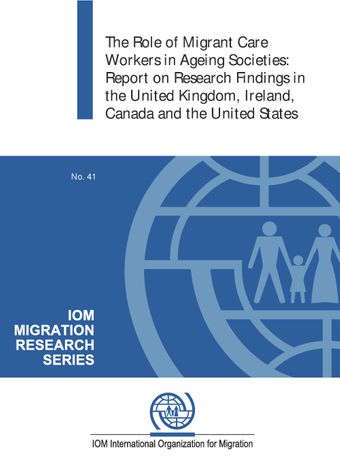The context

- Authors: Sarah Spencer, Susan Martin, Ivy Lynn Bourgeault and Eamon O’Shea
- Main Title: The Role of Migrant Care Workers in Ageing Societies , pp 15-23
- Publication Date: April 2012
- DOI: https://doi.org/10.18356/6cc3722b-en
- Language: English
Today’s and tomorrow’s demand for migrants in the care of the elderly is driven by many factors. A primary factor is the demographic change toward ageing societies where the number of persons aged 65 and older continues to grow relative to those in the working ages of 15 to 64. Part of the demographic story also lies in the choices natives make in how they form families or the jobs they prefer. Beyond the demographics, each nation makes choices about how care is funded, the level of funding for care, and the settings of care. Wages are also part of the dynamic, given that the long-stay sector may tend toward low-wage jobs that fail to attract natives in sufficient numbers. Finally, in a global economy, the mobility of migrants makes them obvious candidates for all manner of jobs and, as this report demonstrates, many find their way into long-term care for the elderly.
© United Nations
ISBN (PDF):
9789210556279
Book DOI:
https://doi.org/10.18356/4da61c68-en
Related Subject(s):
Migration
Sustainable Development Goals:
-
From This Site
/content/books/9789210556279c004dcterms_title,dcterms_subject,pub_keyword-contentType:Journal -contentType:Contributor -contentType:Concept -contentType:Institution105
/content/books/9789210556279c004
dcterms_title,dcterms_subject,pub_keyword
-contentType:Journal -contentType:Contributor -contentType:Concept -contentType:Institution
10
5

